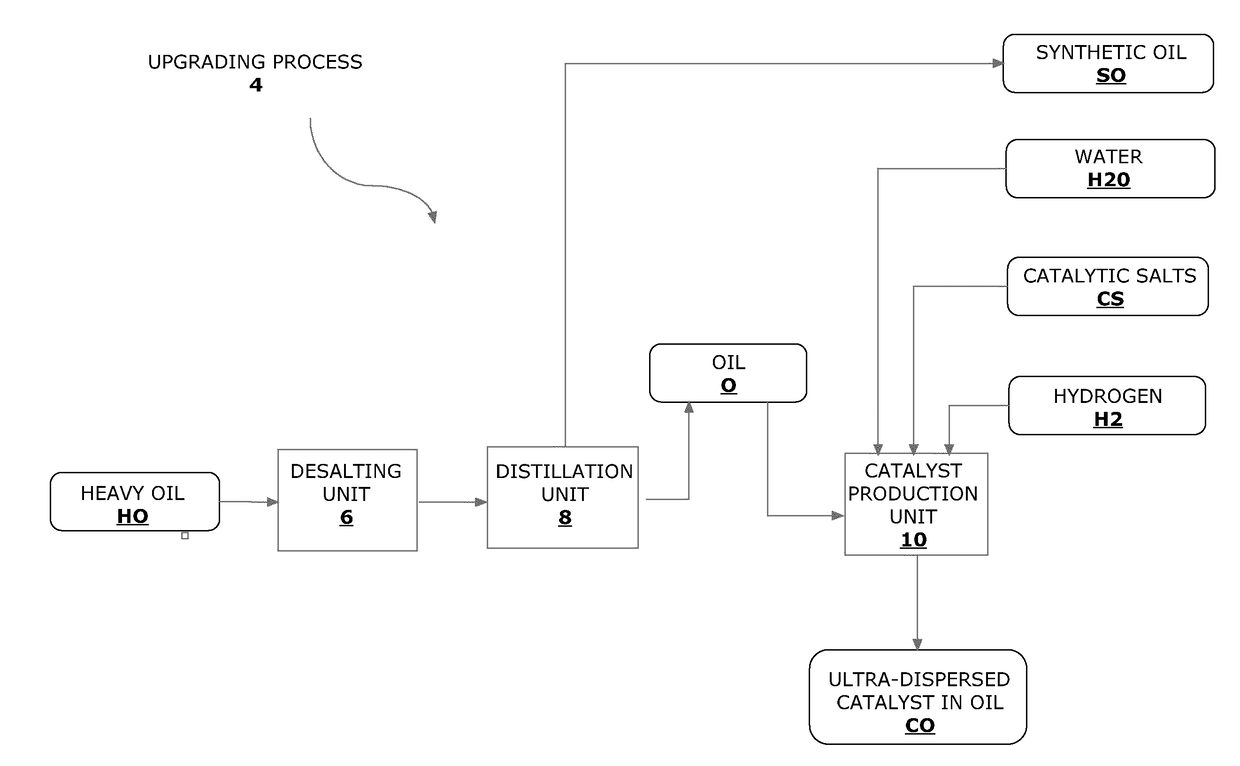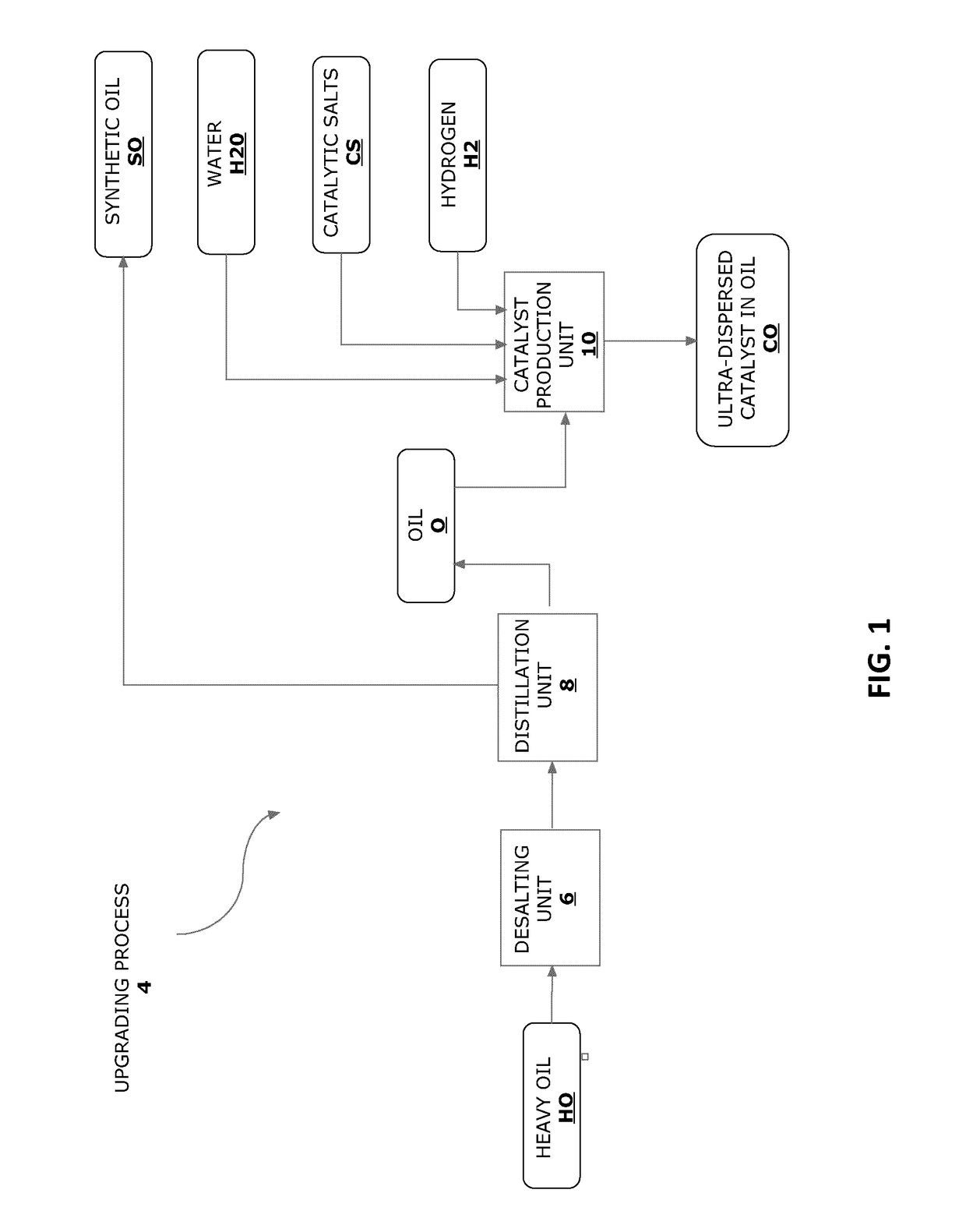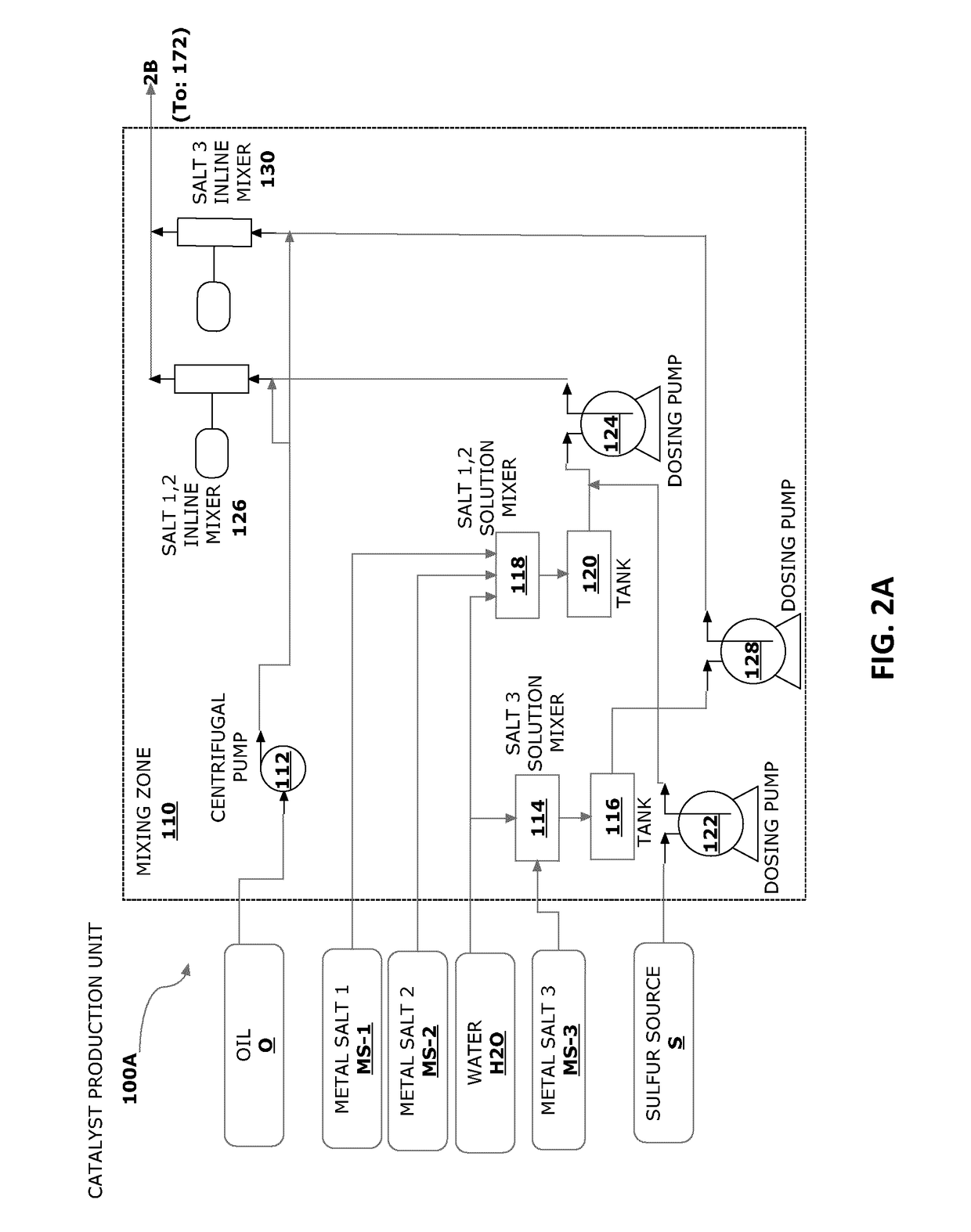Catalyst preparation unit for use in processing of heavy hydrocarbons
- Summary
- Abstract
- Description
- Claims
- Application Information
AI Technical Summary
Benefits of technology
Problems solved by technology
Method used
Image
Examples
embodiment 1
paration Unit for Preparation of Tri-Metallic Catalyst
[0075]According to one embodiment of the present invention, a catalyst preparation unit is provided which is designed to prepare ultra-dispersed catalyst in oil according to a process designated herein as “preparation of tri-metallic catalyst.” This embodiment of the catalyst preparation unit is shown in two parts (100A and 100B) in FIGS. 2A and 2B, respectively. One particular example of a process for production of a trimetallic catalyst is the production of Ni—W(S)MoO3 catalyst which is described in Example 4 of U.S. Pat. No. 7,897,537 which is incorporated herein by reference in entirety. The present embodiment is an appropriate platform for producing this and other similar metal-based hydrocarbon processing catalysts.
[0076]Turning now to FIG. 2A, which shows part 100A of the catalyst preparation unit, it is seen that material inputs into this part 100A of the catalyst preparation unit include an oil O (which may be a heavy oi...
embodiment 2
paration Unit for a Salt Composite Feed Process
[0084]According to another embodiment of the present invention, a catalyst preparation unit is provided which is designed to prepare ultra-dispersed catalyst in oil according to a process designated herein as “salt composite feed.” In a manner similar to FIGS. 2A and 2B, the present embodiment of the catalyst preparation unit is shown in two parts (200A and 200B) in FIGS. 3A and 3B, respectively.
[0085]Turning now to FIG. 3A, there is shown a mixing zone 210 in part 200A of the catalyst preparation unit. It is seen that material inputs include an oil O (which may be a heavy oil fraction or vacuum distillation residue or similar sample), and a mixture of three different metal salts, each in solid form and one or more compounds providing a reactant source of sulfur. This mixture is referred to as a “metal salt composite” MS-C.
[0086]The metal salt composite MS-C is conveyed to a mill 234 whose function is to grind the solids to reduce parti...
embodiment 3
paration Unit for a Mono-Metallic Catalyst Preparation Process
[0091]According to another embodiment of the present invention, a catalyst preparation unit is provided which is designed to prepare ultra-dispersed catalyst in oil according to a process designated herein as “mono-metallic catalyst preparation.” In a manner similar to FIGS. 2A and 2B as well as FIGS. 3A and 3B, the present embodiment of the catalyst preparation unit is shown in three parts (300A and 300B and 300C) in FIGS. 4A, 4B and 4C, respectively. This embodiment provides a mixture of three different mono-metallic catalyst compounds by separate reactions of three different metal salt compounds with a sulfur source compound. However, the skilled person will recognize that alternative embodiments are possible wherein only one, only two or more than three metal salts are used to generate distinct mono-metallic catalyst compounds. Therefore, alternative embodiments are contemplated wherein fewer or more catalyst reactant...
PUM
| Property | Measurement | Unit |
|---|---|---|
| Angle | aaaaa | aaaaa |
| Angle | aaaaa | aaaaa |
| Angle | aaaaa | aaaaa |
Abstract
Description
Claims
Application Information
 Login to View More
Login to View More - R&D
- Intellectual Property
- Life Sciences
- Materials
- Tech Scout
- Unparalleled Data Quality
- Higher Quality Content
- 60% Fewer Hallucinations
Browse by: Latest US Patents, China's latest patents, Technical Efficacy Thesaurus, Application Domain, Technology Topic, Popular Technical Reports.
© 2025 PatSnap. All rights reserved.Legal|Privacy policy|Modern Slavery Act Transparency Statement|Sitemap|About US| Contact US: help@patsnap.com



